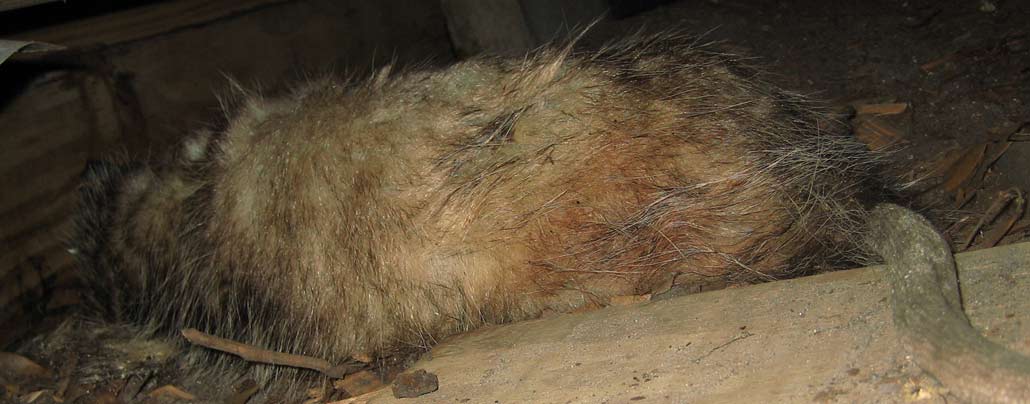- USA Wildlife Removal Education Guide - How to Find a Dead Animal in the House
How to Find a Dead Animal in the House

In finding the source of foul odors, the natural instinct is to depend on your sense of smell, sniffing your way toward the area where the odor is strongest. In fact, most animals don’t choose to die in the open but rather, they are usually miserable and tend to hide out in cracks or secluded openings.
You might get lucky, in the event that the animal has not holed up in a hidden, hard-to-access place or if air currents don’t carry the aroma away from the actual site of the dead animal. If in an exposed place, you have but to remove the animal and, depending on the degree of its decomposition, clean up and deodorize the area.
More often, an animal that is near its end of days will not make it that convenient for you. In such cases you may want to enlist the services of a family pet. Dogs and cats, for example, have very sensitive noses and in addition, they tend to be curious. Tap into that curiosity and let them lead you to (or near to) the deceased animals penultimate resting place.
Insects can also help lead you to a dead animal, since they are normally attracted to decaying flesh -- just as you are repelled by it. An assembly of flies or a trail of ants can provide a strong indication of where your dead animal is located. While flies’ buzzing around can give you a general idea of where to find the carcass, a trail of ants can provide a figurative arrow pointing to its exact location.
It is not always an odor that alerts the householder to the presence of a dead animal. Sometimes the alert can be visual -- depending on the state of decomposition. Often, animals choose attics as the place to die and if not detected, their decomposition can generate a stain on the ceiling of the room below.
In any case, quick and comprehensive response is called for to remove the dead animal, deal with the stench of its rotting flesh, clean up the area, and maintain pleasant living conditions.
If you need help, we service the entire USA! Click here for a wildlife removal specialist in your town!
Go back to the main Wild Animal Removal page for more information about How to Find a Dead Animal in the House.

